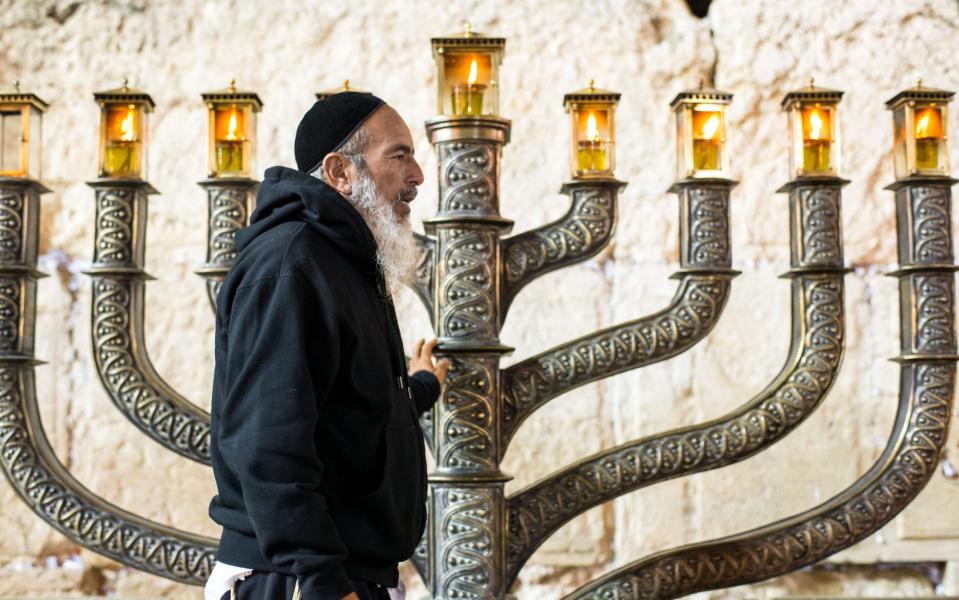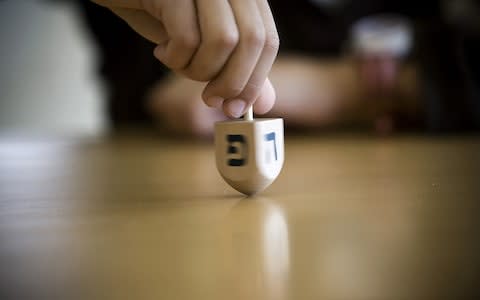The history of Hanukkah: How the 'miracle of the oil' sparked the Jewish Festival of Lights

Hanukkah, the eight-day Jewish festival also known as the Festival of Lights, see Jews around the world light one candle on a nine-branched menorah - or 'hanukiah candelabrum' - each day.
The holiday begins on the 25th day of Kislev, which is the ninth month of the ecclesiastical year on the Hebrew calendar. In the western calendar, Hanukkah is celebrated in November or December. This year it begins on Sunday December 22nd and continues until Monday December 30th.
What is the history behind Hanukkah?
The word Hanukkah means 'rededication' and commemorates the Jews' struggle for religious freedom, when the leaders of a Jewish rebel army called the Maccabees rose up against their Greek-Syrian oppressors in the Maccabean Revolt of 167 BC (BCE).
King Antiochus had taken over the Second Temple in Jerusalem and soon after ordered an altar to Zeus to be erected. Judaism was prohibited, circumcision was banned and pigs were ordered to be sacrificed at the altar.
The Jewish rebellion that followed was led by Judah Maccabee, (or Y'hudhah HaMakabi, meaning "Judah the Hammer"). The uprising spanned three years until the Maccabees gained control of Jerusalem.
Judaism's central text the Talmud, dictates only pure olive oil with the seal of the high priest can be used for the Hanukiah.
They wanted to rededicate the desecrated temple, but could find only one container of the sacred oil needed which had the seal of the high priest still intact.
The candelabrum is required to burn throughout the night every night but, according to legend, although there was only enough oil for one day the candles miraculously stayed alight for eight days – the time needed to prepare a fresh supply of kosher oil for the menorah.
This event became known as 'the miracle of the oil' and is now marked with this eight-day festival.
And what about traditional Hanukkah food?
For Hanukkah, Jews customarily eat fried foods to commemorate the miracle associated with the temple oil.
'Sufganiyot' are round deep-fried jam or custard-filled doughnuts which are topped with powdered sugar.

These are said to derive from a yeast dough pastry mentioned in the Talmud. These pastries were cooked in oil and called sufganin (absorbent) because they absorbed a lot of oil in cooking.
In more Northern communities, where olive oil was scarce and expensive, goose or chicken fat was often used for frying so potato pancakes (latkes), apple fritters, and other non-dairy fried foods became the norm.
Why are dairy products popular during Hanukkah?
During the Babylonian captivity of the Jews, the town of Bethulia in Judea was under siege and its population on the verge of surrender due to lack of water.
A young woman called Judith requested a meeting with Nebuchadnezzar's top General, the Assyrian Holofernes, who was directing the siege outside the town walls.
She entered the Holefernes camp and seduced him, fed him salty cheeses so that he would become thirsty and served him wine so he would fall asleep. She then killed him and returned to the town with his severed head.
The Assyrians, having lost their leader, fled and Israel was saved. Judith remained unmarried for the rest of her life and in memory of her bravery and purity Jews make sure to eat dairy products during Hanukkah.
Nowadays, even though olive oil is affordable, dairy is often added on top of a latke - usually in the form of a dollop of sour cream.
Is it Chanukah or Hanukkah?
In Hebrew, Hanukkah is pronounced with the letter 'chet'. The letter “H” makes the closest sound, so both names work and can be used.
Celebrating Hanukkah with a dreidel
Games are often played during the festival, including spinning the dreidel which is the Yiddish word for a spinning top.
A dreidel is a pointed, four-sided top which can be made to spin on its pointed base. Dreidels are normally made of plastic or wood and there is a Hebrew letter embossed or printed on each of the dreidel's four sides.
These four letters form the acronym of the phrase: "Nes gadol hayah sham," "A great miracle happened there"; a reference to the Hanukkah miracle of the oil.

The dreidel dates back to the time of the Greek-Syrian rule over the Holy Land - the one which set off the Maccabean revolt (see above). Learning Torah was outlawed by the enemy, a 'crime' punishable by death and Jewish children were forced to study in secret.
If the Greeks came calling, the pupils would pull out their tops and pretend to be playing a game.
Hanukkah in popular culture
Jewish comedian Adam Sandler was a regular on Saturday Night Live before he became famous for starring in terrible movies. In 1994 Sandler wrote and performed 'The Chanukah Song', a novelty ditty which deals with the issue of Jewish children feeling alienated during the Christmas season.
Sandler lists Jewish celebrities (both real and fictional) as a way of sympathising with the children's situation.
Many fans of popular culture previously unfamiliar with the festival first became aware of Hanukkah after an episode of the popular sitcom Friends aired in December 2000.
Ross, who is entertaining his young (and half-Jewish) son Ben during the week of Christmas, tries at the last minute to find a Santa costume.
The only outfit available is an armadillo so he creates a new holiday character called 'The Holiday Armadillo' - Santa’s south-of-the-border friend who teaches Ben about the importance and history of Hanukkah.
